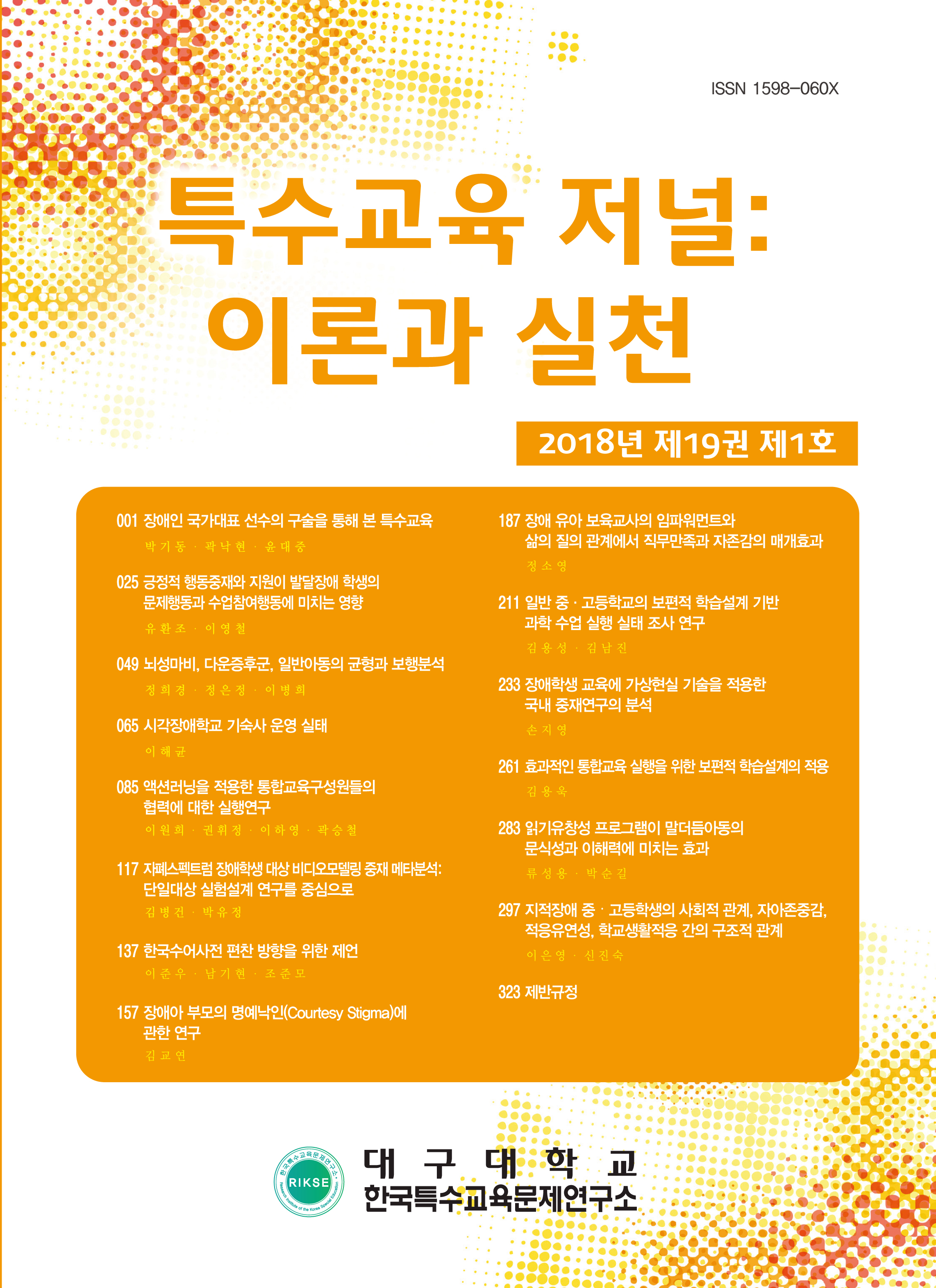본 연구에서는 가상현실 기술을 장애학생 교육에 실제 적용하여 효과를 검증한 국내 중재 연구들을 고찰해 보면서, 국내 연구동향과 함께 실제 장애인교육 현장에서 효과적으로 검증된 가상현실 기술의 유형 및 프로그램의 효과성을 체계적으로 분석해보았다. 이를 위해 학술데이터베이스를 활용하여 2000년에서부터 2017년까지 발표된 논문들을 검색한 결과, 국내 중재연구로 총 28편이 분석 대상으로 선정되었다. 연구결과, 발달장애와 지체장애를 대상으로 한 연구와 학령기 학생들을 대상으로 한 연구가 다수를 차지하고 있었다. 연구방법으로는 집단간 비교설계가 가장 많았으며, 자료수집방법으로는 수행관찰과 검사 도구를 가장 많이 사용하였다. 가상현실기술의 유형은 몰입형, 비몰입형, 삼인칭 가상현실로 구분되었는데, 대다수의 선행연구가 삼인칭 가상현실 기술을 사용하였다. 가상현실기술을 사용한 중재의 효과성으로는 행동적, 인지적, 정서적 효과가 각각 보고되었다. 논의에서는 장애학생 교육에 효과적인 가상현실기술의 적용에 대한 제언과 앞으로의 과제를 제시하였다.
The purpose of this study was to review the recent domestic literature on applying virtual reality(VR) based educations for students with disabilities and to identify research trends and practical implications. The search procedures through the database system were implemented to find the proper research published from 2000 to 2017 and a total of 28 studies were selected. The results identified that most of subjects were elementary school-age students and were students with intellectual disabilities or physical disabilities. Also between-group design was mostly implemented and most of data collection methods was behavioral observation. Types of VR technology were divided into immersive, non-immersive, and third-person VR. The results of review indicated that most of studies used the third person VR type. Additionally, behavioral, cognitive, and emotional effects were identified as the effectiveness of intervention using VR technology. Furthermore, considerations to apply virtual reality based educational programs for students with disabilities were suggested.


